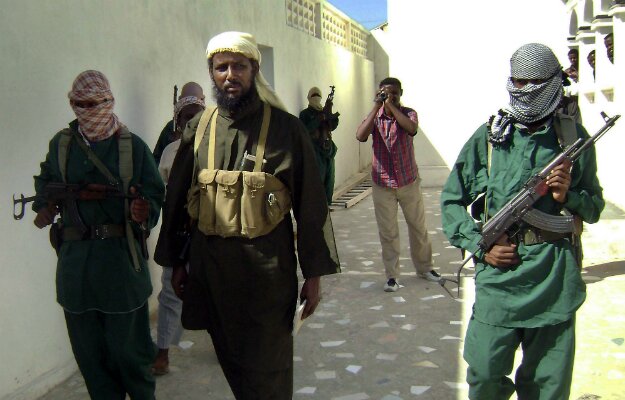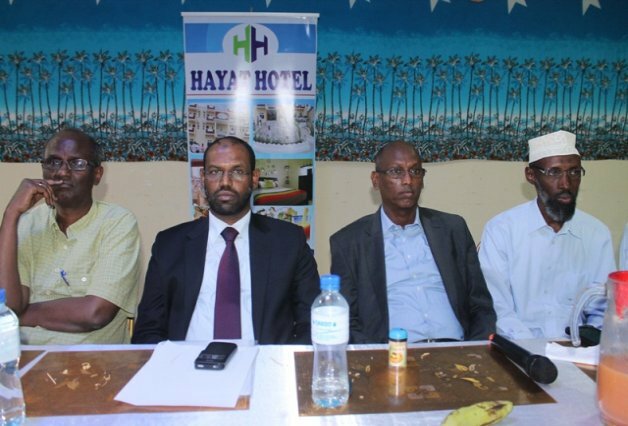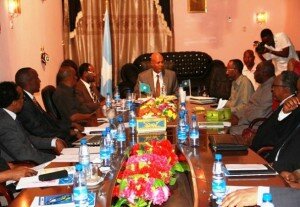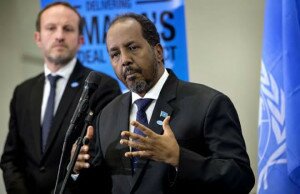Somalia’s Sarajevo by Ken Menkhaus

The strategic port city of Kismayo has now been wrested from al-Shabab. But it’s still a long way from safe.
In Somalia, a yearlong military offensive by Kenyan and Somali forces has succeeded in capturing the strategic seaport of Kismayo from the jihadi group al-Shabab. The liberation of Kismayo is a major setback for al-Shabab, but is also a big test for the African peacekeeping force — the African Union Mission in Somalia (AMISOM) — and the new post-transition Somali government of President Hassan Sheikh Mohamud. If the Kenyan forces win the war but lose the peace — by mishandling how the liberated city is administered by local authorities — it could create new clan conflicts, drive disaffected clans into tactical alliances with al-Shabab, and undermine the new Somali national government. The stakes are very high.
Since the onset of state collapse and civil war in 1991, Kismayo has been Somalia’s Sarajevo — a chronically contested city, at times half-emptied by armed conflict, at other times bloated with hundreds of thousands of internally displaced persons. It has changed hands many times over the past two decades but has always been in the control of warlords or jihadists and has never enjoyed a day of good governance. Rival Somali clans in Jubbaland — the region of southern Somalia where Kismayo is located — have never been able to agree on how to share the city and have repeatedly fought over it. Even al-Shabab suffered an internal armed battle over control of the seaport in 2008. Thanks to years of political violence, Kismayo has a well-earned reputation as the most difficult and dangerous place for aid agencies to operate in all of Somalia.
This history of violence and instability is tragic, as the city has the potential to be one of the most commercially vibrant, cosmopolitan urban centers in Somalia. The city’s main value is as the site of an international airport and an all-weather seaport near the Kenyan border. Proximity to the large Kenyan market makes trade through Kismayo’s port very attractive; the seaport alone generates lucrative customs revenue for whoever controls it. Al-Shabab wrested control of the city from a clan militia in 2008 and reportedly earned about $40 million per year from the seaport, mainly from the illegal export of charcoal to Gulf state markets.
What kind of fallout should we expect from the capture of Kismayo? First, the seizure of the city is a big blow to al-Shabab. The group will now be operating on a far smaller revenue base and will have to seek alternative sources of funding as it regroups in remote interior areas of southern Somalia. The loss of Kismayo will make it much more difficult for al-Shabab to move jihadi fighters and weapons into Somalia. And the loss of Kismayo reinforces a widespread perception among Somalis that al-Shabab is a losing cause, which is likely to increase the number of defections from the group over the next year.

The Islamist group, which since mid-2011 has lost control of a series of urban areas, including parts of Mogadishu, Afgooye, and Merca, has reportedly left in place a network of jihadi cells in Kismayo. They intend to bog down Kenyan forces with asymmetrical urban guerrilla warfare using assassinations, suicide bombs, and improvised explosive devices. In the short run, Kismayo will be unstable, violent, and difficult for AMISOM, humanitarian agencies, and Somali government authorities to navigate. Kenyan forces will be tested by attacks in a new and much more difficult urban environment. If they respond too aggressively to terrorist attacks, they risk killing civilians, which could quickly turn Kismayo’s population against them. Faced with threats by al-Shabab operatives who have now melted into the civilian population, citizens are unlikely to volunteer to help the Kenyan forces identify al-Shabab insurgents. Until al-Shabab can be slowly weeded out, this will be Kenya’s most difficult moment in Somalia since it first intervened.
Humanitarian needs are reportedly high in the city, and international aid agencies have come under pressure to move in quickly behind the Kenyan forces to provide assistance. But aid agencies must be given time to work out security and operational complexities in the city. Rushing in with aid supplies before doing essential groundwork will only get people killed. Kenyan forces and local Somali officials must appreciate the fact that, to maintain some semblance of neutrality, humanitarian agencies need to keep a certain distance from foreign peacekeeping forces engaged in active armed conflict. This is essential for the safety of aid workers, and it is not a matter to be taken lightly in a country that has witnessed many casualties of humanitarian workers.
The biggest challenge is the process by which a Somali local administration is formed to administer Kismayo. As the Enough Project has argued elsewhere, Kismayo cannot be allowed to fall into the hands of a narrow coalition of clan interests that impose a “victor’s peace” on the city. If this occurs, other disgruntled clans will reject the outcome and may very well turn to al-Shabab in a bid to oust the new administration from the city.
It is very much in everyone’s interest that the handling of local governance over Kismayo not become a recruiting tool for al-Shabab. Somalia’s civil society and the international community must insist that Kismayo be an open, cosmopolitan city where all Somalis enjoy full rights to live, work, own property, and pursue political positions.
The good news is that Kenya worked with the regional organization known as the Intergovernmental Authority for Development (IGAD) to broker a power-sharing deal among local political interests in advance of the capture of Kismayo. Kenya and IGAD reportedly sought to ensure that the new city administration be broad-based and devoid of warlords. This was an excellent move, but the deal was brokered at a time when Somalia’s national transitional process appeared to be headed toward delays, impasse, and crisis. This situation arguably justified outside powers taking it upon themselves to negotiate a local power-sharing deal in advance of the city’s liberation.
But the political context in Somalia has changed dramatically since September, when an appointed parliament elected a new president, Mohamud, and ended an eight-year transitional government. Somalia is now technically in the hands of a sovereign, post-transition government. Under these new circumstances, IGAD and the Kenyan forces should seek the guidance of Mohamud’s administration regarding who governs Kismayo. That’s a problem, though, as the new administration has not yet been formed — the president has yet to name a prime minister and cabinet.
The dilemma is clear. The Kenyans cannot wait until the Somali national government is formed and capable of reaching a decision on the administration of liberated zones like Kismayo. The port city urgently needs to be governed now; allowing it to fall into criminal violence is simply not an option. But a Kismayo administration prearranged by neighboring states is problematic in a post-transition context.
A solution may be in reach. Kenya, IGAD, Mohamud, and the local political players tapped to administer Kismayo should meet in Mogadishu and quickly negotiate the terms of a provisional administration over the city. This negotiation should acknowledge the sovereignty of the new government, recognize that the new government currently lacks the means to directly administer newly liberated space, and set clear timetables and limits on the authority of a city administration that will be explicitly provisional in nature. At a minimum, this will buy some time until the new Somali national government can form a complete cabinet and address the urgent question of how local or regional administrations are to be formed in newly liberated zones. This is a question that was left unresolved by the flawed interim constitution.
Finally, and perhaps most importantly, the residents of Kismayo must be convinced that their lives are much better without al-Shabab. Three immediate issues for them will be security, jobs, and accountability. The AMISOM forces must work closely with the Somali administration that is established there to ensure that security forces are a source of protection and rule of law, not predation. Measures should also be taken to facilitate the rapid resumption and expansion of commercial trade through Kismayo’s seaport. The city’s population relies heavily on trade, and strong commercial activities will go a long way toward improving livelihoods. The government must apply effective accountability measures to report on seaport customs revenues as well, so that the population begins to have trust that customs revenues are not just lining the pockets of corrupt local officials or AMISOM forces.
All these decisions will be made in the days and weeks to come, and they will have enormous long-term implications for Somalia and its new government. Mistakes at this critical juncture are simply not an option. The international community and the many Somali political interests involved must get Kismayo right.
__
FP
Comments
comments
 Calendar
Calendar






































